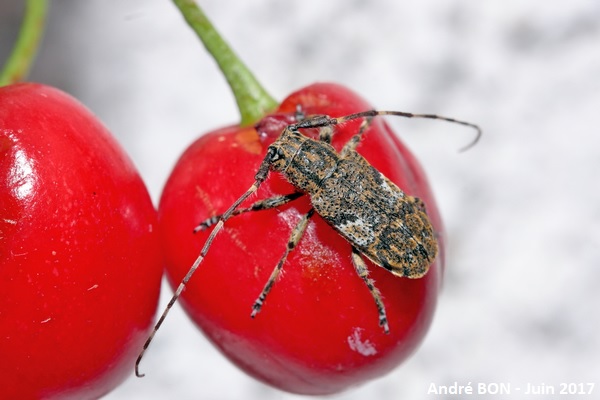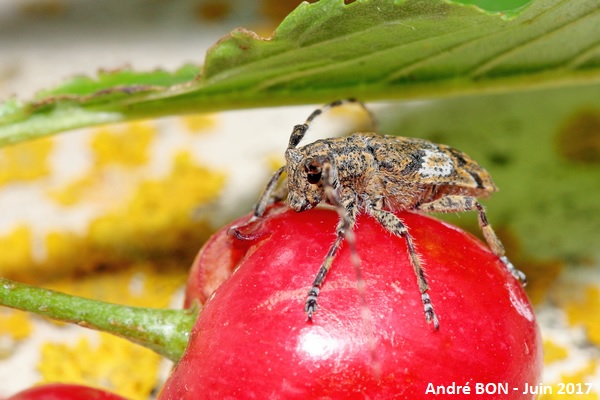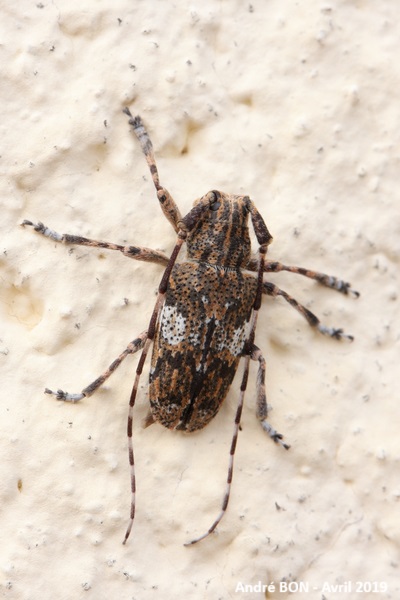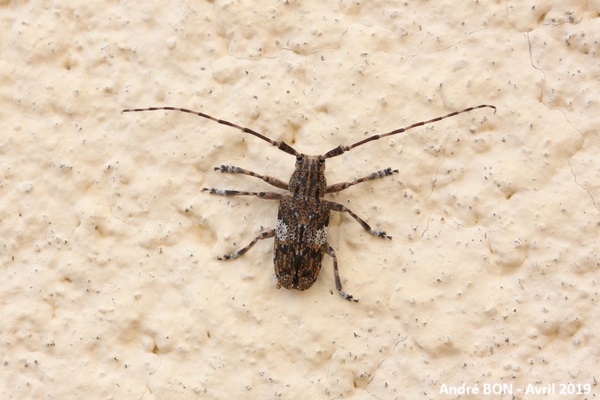




| Mesosa nebulosa (Fabricius, 1781) |





|
|
Scientific name: Mesosa nebulosa (Fabricius, 1781) Common name: French name: Mésose nébuleuse, Lamie écorce de chêne. Order: Coleoptera Family: Cerambycidae Wingspan : Body size: 9 to 15 mm. Females' antennae reach the apex of the elytra, those of males are longer and exceed the apex of the elytra by 3 to 5 articles. Biotope: On trunks, dead branches and piles of logs. The larvae develop in dead wood with a development cycle of 2 to 3 years. It is therefore necessary to have dead wood stored or simply present for a long enough time. Geographic area: Europe, rarer in the north, North Africa, Middle East, the Caucasus. Observation period : April to August. The metamorphosis takes place in autumn. Mesosa nebulosa overwinters in its pupal chamber and emerges in spring. |
Mesosa nebulosa has a relatively short and wide body. It is covered with reddish-brown hair and marked with black lines and small black dots. The pronotum bears 4 black lines which extend over the head. The elytra bear a broad white median band, better marked near the costal edge and edged with wavy black lines. The antennae and legs are brown with light grey rings. |
| [To know more about the Mesosa nebulosa] [Next picture] [Top] |

|
I found this Mesosa nebulosa in my Cherry tree. Its general colour provides a very efficient camouflage on the bark of branches or trunks but this is much less efficient on cherries. The very long antennae indicate a male. |
| [To know more about the Mesosa nebulosa] [Next picture] [Previous picture] [Top] |

|
"It's my cherry, forbidden to pick it!" Result of the picking: One less cherry but one more species of beetle in my list of species observed in the garden. |
| [To know more about the Mesosa nebulosa] [Next picture] [Previous picture] [Top] |

|
Here is a position where it is easy to see if the length of the antennae exceeds the apex of the elytra. This is indeed the case here so we are in the presence of a male. |
| [To know more about the Mesosa nebulosa] [Next picture] [Previous picture] [Top] |

|
Another view from above. Was it the presence of the photographer that caused the antennae to straighten? |
| [To know more about the Mesosa nebulosa] [Previous picture] [Top] |

|
Side view. |